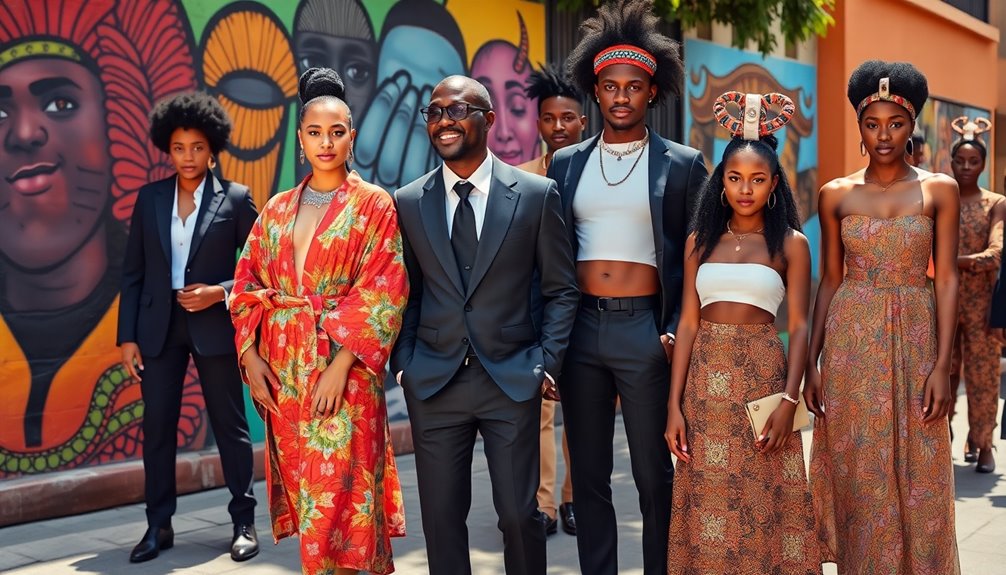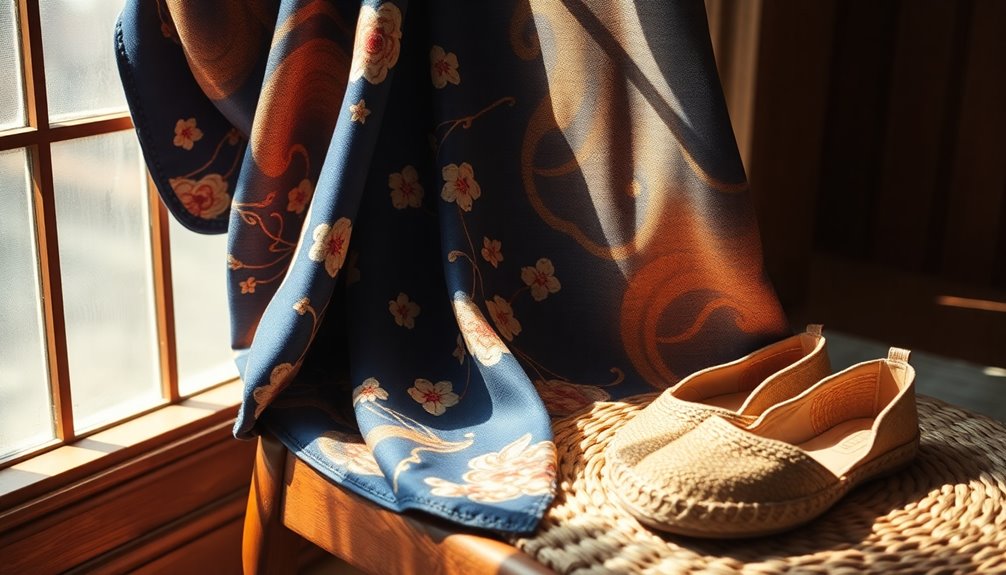Fashion plays an essential role in social movements, letting you express your values and solidarity without words. Through symbols like colors, styles, and slogan tees, clothing transforms into powerful tools for resistance. As you choose what to wear, you can visually communicate your beliefs and inspire change. However, the commercialization of fashion can sometimes overshadow core messages. There’s much more to discover about how fashion and activism intertwine, shaping the future of social movements.
Key Takeaways
- Fashion serves as a powerful tool for expressing solidarity and unity within social movements, communicating values without words.
- Historical examples demonstrate how clothing styles can symbolize resistance, such as the suffragettes’ colors and the Black Panthers’ uniforms.
- Non-verbal fashion statements, like slogan tees, raise awareness and foster shared identities among participants in social movements.
- Challenges like commercialization and environmental impact can dilute the original messages of movements, emphasizing the need for ethical practices in fashion.
- The future of fashion in activism requires a balance between style, sustainability, and inclusivity to effectively support social causes.

As social movements rise to challenge societal norms, fashion emerges as an essential tool for expressing solidarity and unity. You mightn’t realize it, but what you wear can speak volumes about your beliefs and affiliations. Clothing styles have a unique power to challenge societal expectations, allowing you to demonstrate your commitment to a cause. Throughout history, social movements have harnessed fashion to foster a sense of belonging among participants, turning ordinary garments into symbols of resistance and empowerment.
Take the suffragette movement, for example. The women fighting for their right to vote strategically used fashion to project a message of empowerment and respectability. By wearing white, purple, and green, they not only made a statement but also created a visual identity that resonated with their cause. Similarly, during the anti-Vietnam War movement, black armbands and bell-bottoms became powerful symbols of dissent, reflecting a collective rejection of traditional values. When you wear clothing that aligns with a movement, you become part of a larger narrative, contributing to a shared identity.
Fashion has the power to embody movements, transforming garments into symbols of empowerment and collective identity.
Fashion also plays a vital role in breaking down societal barriers. Feminist movements have utilized trends like mini-skirts to challenge gender norms and assert women’s rights over their own bodies. The Black Panthers took this a step further by adopting uniforms and berets to symbolize their solidarity and rebellion against oppression. These choices not only expressed political sentiments but also created a sense of unity among members, making it clear that they were part of something larger than themselves.
Moreover, fashion helps communicate values without the need for words. When you don a slogan t-shirt, like Katharine Hamnett’s against nuclear missiles, you’re broadcasting your beliefs to the world. This non-verbal form of expression can greatly impact public perception and attitudes, moving conversations in new directions. The environmental movement has also embraced fashion, using slogan tees to raise awareness about critical issues.
However, while fashion can amplify social movements, it’s not without its challenges. The commercialization of protest fashion sometimes dilutes its original message, and the fashion industry’s environmental impact can contradict the values of activism.
To truly support socio-political movements, fashion needs to be inclusive and sustainable. Balancing style with ethical practices is vital. As you navigate the world of fashion, remember that your choices can inspire change and contribute to a more inclusive society.
Frequently Asked Questions
How Can Fashion Influence Public Perceptions of Social Movements?
Fashion can greatly influence public perceptions of social movements. When you wear specific clothing items associated with a cause, you visually communicate your support, making it more noticeable.
This attire often sparks conversations and raises awareness, drawing attention to the issues at hand. By choosing fashion that resonates with a movement, you help create a collective identity, fostering unity among supporters and making the cause more relatable and impactful in the eyes of the public.
What Historical Examples Showcase Fashion’s Impact on Activism?
You can see fashion’s impact on activism through various historical examples.
During the Women’s Suffrage Movement, suffragettes wore white to symbolize purity and unity.
The Civil Rights Movement featured distinctive clothing, asserting identity against oppression.
Protesters in the Anti-Vietnam War Movement donned black armbands to express dissent.
Additionally, the Black Panther Party used black leather and berets to promote non-Eurocentric beauty standards.
Each instance shows how fashion can amplify messages and unify movements.
Can Fashion Trends Distract From the Core Message of a Movement?
Imagine a vibrant protest where everyone wears matching colors, creating a sea of unity.
Yet, those colors can sometimes overshadow the message behind them. When fashion trends emerge, they can distract you from the core issues, reducing complex movements to mere aesthetics.
You might notice brands adopting symbols just for profit, diluting the original intent. In such cases, the visual appeal often eclipses the critical conversations that need to happen for real change.
How Do Designers Choose to Align With Specific Social Causes?
When you consider how designers choose to align with specific social causes, think about their brand values and aesthetic. They often look for causes that resonate with their identity, ensuring authenticity in their messaging.
What Role Does Social Media Play in Fashion and Activism?
Imagine social media as a vibrant marketplace, where every outfit tells a story.
In this bustling space, you can share your fashion choices to spark conversations about causes that matter. You’re not just wearing clothes; you’re wearing messages that resonate.
Conclusion
So, next time you slip into a pair of skinny jeans or throw on a vintage tee, remember: you’re not just making a fashion statement; you’re potentially leading a revolution. Who knew your wardrobe could double as a protest? Fashion isn’t just fabric; it’s a tool for change, a silent scream for justice, or perhaps just a way to express how deeply you care about avocado toast. After all, nothing says “I’m woke” like a perfectly curated outfit.










